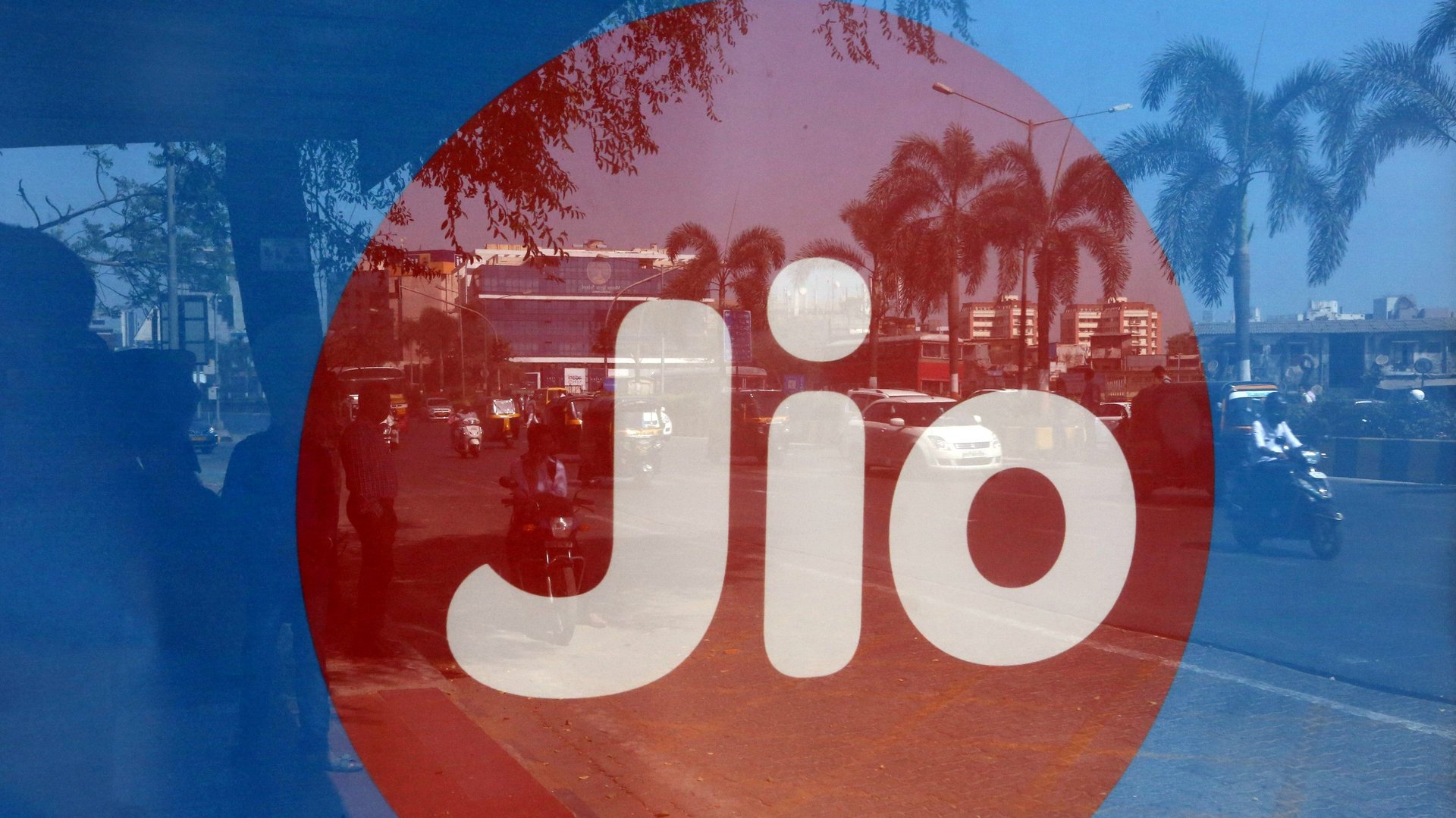Reliance Jio’s OTT blitzkrieg needn’t worry rivals—for now
Earlier this week, India’s richest man spooked the market with his mega plans for fixed-line broadband and over-the-top (OTT) content. However, as experts study the fine print, they believe there’s no reason for his rivals and their investors to lose hope as of now.


Earlier this week, India’s richest man spooked the market with his mega plans for fixed-line broadband and over-the-top (OTT) content. However, as experts study the fine print, they believe there’s no reason for his rivals and their investors to lose hope as of now.
On Aug. 12, Mukesh Ambani hosted thousands of investors of his oil-to-telecom behemoth Reliance Industries at the group’s 42nd annual general meeting in Mumbai. Even as investors lauded and applauded the many multi-million dollar deals and investments—some new, some old—that Ambani spoke about, some of the loudest cheers came for a rather modest announcement.
“With Jio first-day-first-show, premium Jio Fiber customers will be able to watch movies in their living rooms the same day these movies are released in theatres,” Ambani said, setting off thunderous applause and a celebration on Twitter. “…Jio Fiber plans will be priced between Rs700 ($10) to Rs10,000 per month to suit every budget and every need.”
Jio Fiber, unveiled at the AGM, is Reliance’s much-awaited, fixed-line broadband service that will be launched on Sept. 5. It will offer buyers lifetime free voice calls from a landline phone, high-speed broadband, and a high definition TV—all bundled in with one connection—besides a dish with a monthly subscription charge.
Entertainment bonanza
The first-day-first-show announcement spooked investors of India’s Rs10,000 crore multiplex industry, with shares of several multiplex operators falling on BSE.
“This is a smart strategy for two reasons. First, the Jio 4G launch has shown fast and cheap access can fuel massive demand for content. With Jio Fiber, there will be a further uptake in content and that too on a larger scale,” said Amit Adarkar, CEO for India and operations director for Asia Pacific at the UK-based market research firm Ipsos. “Offering third party content is a good way to feed the proverbial content machine. This supports Jio’s strategy to pretty much own the data pipe.”
Overtaking OTT?
Ambani also set off ripples in India’s overcrowded and fiercely contested over-the-top (OTT) content market when he said that Jio Fiber will give users access to the company’s OTT platform, Jio TV, along with the option to bundle subscriptions to third-party premium video applications.
India’s OTT industry currently has an estimated 35 players, including multinational majors like Netflix and Amazon’s Prime Video, and domestic ones like Hotstar, Voot (owned by Reliance), and Zee5.
Already, at least three OTT platforms, ALTBalaji, ErosNOW, and, Netflix—are sold bundled with Jio mobile phones. Jio could extend these partnerships to its fixed-line venture, too. Netflix declined comment for the story.
Many in the industry are of the view that by offering bundled third-party OTT services, Jio may, in the long run, be in a strong position to dictate revenue-sharing arrangements.
However, some say the reaction to the announcements might have been premature.
“Jio mobile phone users already have access to the company’s own and third-party content from other OTT service providers. So, Jio’s move does not have any novelty. Because the thing that changes is size of the screen and the functionality that is user experience,” said a media industry veteran on condition of anonymity.
Advantage Jio
Jio now boasts of 340 million subscribers and is the country’s largest telecom operator, pipping the likes of Bharti Airtel and Vodafone-Idea. What’s more, Jio is signing up over 10 million new customers each month.
Now, the company has big plans for Jio Fiber, too—to reach 20 million residences and 15 million business establishments in 1,600 towns over the next 12 months.
“A player that is into content (creation) business has a strong advantage if it also owns the distribution pipe or is the connectivity provider,” said Advait Gupt, co-founder, Supari Studios, a Mumbai-based content creator. “To a large extent, a higher volume of internet users gives Jio an advantage to push through its services to a larger audience compared to other telecom operators.”
In addition, industry experts say Jio’s latest moves are in line with the group’s strategy of disrupting businesses through innovation and pricing. In 2002, for instance, Reliance Communications disrupted the mobile handset industry by offering a free handset with a subscription to the mobile service.
“Bundled services along with affordable data connectivity will be a value add on for consumers and will impact pricing. The market will see a correction in OTT service pricing which is good news for consumers,” Gupt said.
Roadblocks ahead
Even as Jio has an advantage over rivals, it’s not going to be a smooth ride for the company.
Monetisation of content is the biggest challenge facing Jio. So far, it has benefited from rock-bottom pricing for its mobile data plans.
The “willingness to pay for digital content remains low in India,” said a report published by US-based marketing and analytics consultancy firm Strategy Analytics in September 2018. To be successful in the content space, it’s imperative for a player to combine a business model and a user experience that resonates with target customer segments, it added.
In addition, growing a fibre internet service is not as easy as expanding a mobile data operation.
“The company could face some delays in the physical ramp-up of its fixed-line network,” said Adarkar of Ipsos. “Unlike wireless 4G rollout, Jio Fiber will have to deal with infrastructure-related hurdles to establishing last-mile connectivity. This could impact its ambitious plans to get more data users on board. Also, I’m not sure how Jio Fiber will address the ‘next’ 500 million customers, people who don’t yet have access to the internet.”